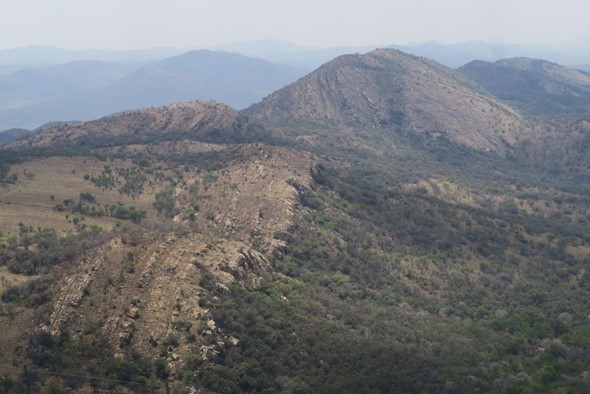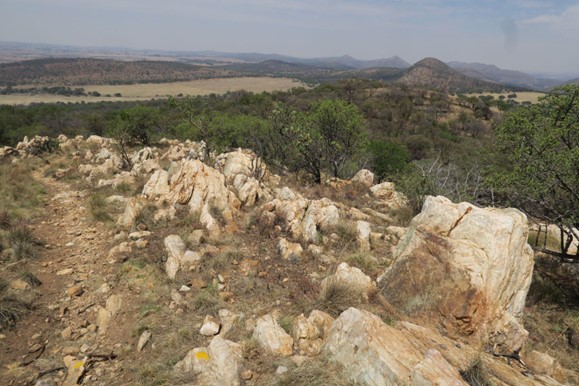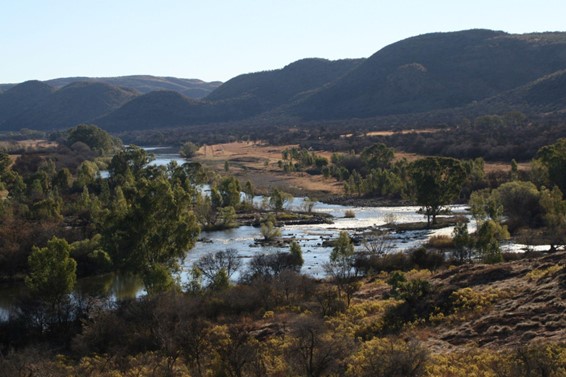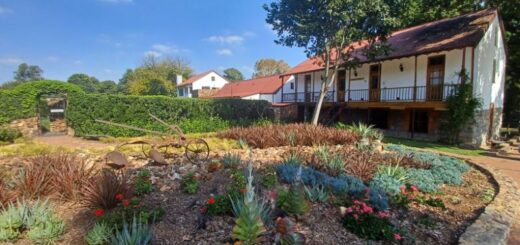Visit the Vredefort Dome: The Heritage that Started with a Bang!

September is the month when we South Africans celebrate our country’s heritage. There are various heritage sites across the country: some monuments and other natural sites. One of the sites we can visit is none other than the 7th place to be declared a UNESCO Heritage Site in South Africa and the location of the largest meteor impact on Earth, the Vredefort Dome.
What is the Vredefort Dome?
According to UNESCO, the Vredefort Dome was formed about 2 billion years ago by an enormous meteorite kilometres-wide crashing into the earth. The crater left behind by the impact spanned 200 to 300 kilometres in diameter, stretching across three of our modern-day provinces. This means that people can visit the Vredefort Dome in the Free State, North West and Gauteng provinces.
“Due to the immense force of the impact, the ground at the centre of the impact was essentially liquefied and this caused an uplift to form — much like when you drop a stone into a pond of water and the water rebounds in the middle of the splash”, explains David Fleminger, a local travel writer and photographer. Today, only the North West section of the central uplift is still visible above the present ground level and is known as the ‘Dome Bergland’.
Located 100 kilometres from Johannesburg, around the towns of Vredefort and Parys is the Vredefort Dome. It is the largest and oldest meteorite impact zone, or astrobleme, on earth. According to the World Heritage Convention, the dome bears witness to the world’s greatest known single energy release event.

“In the ’80s and ’90s, there was a great debate about the forming of the dome with some arguing that it was caused by a crypto explosion from underneath the earth caused by magma rising upwards”, said Ricart Boneschans, a Geology lecturer at the North-West University. In the late ’90s, high-pressure quartz and silicone that can only be found at meteorite impact zones were found at the site.
Interestingly, Boneschans points out that the meteorite was about the size of Table Mountain.
Why is this Natural Monument a Heritage Site?
It may not be a monument of our recent cultural history or our country’s historic struggles, but it is most certainly a geological heritage site. Some heritage sites are only national or international. The Vredefort Dome is both an international and national heritage site according to UNESCO. It was awarded World Heritage status by UNESCO in 2005. “An impact of this size would usually have resulted in a mass extinction event but the only forms of life on Earth at the time were bacterial so there was no major ‘die-off’,” said Fleminger.
Although it is mainly a geological heritage site, evidence of Stone Age civilisation has been found at the location. This includes caves full of skulls, paintings and tools. Rock art of the Khoi-San, ruined kraals of the later Sotho and Tswana cultures, as well as 19th-century settlements such as gold mines near Venterskroon, were found at the Vredefort Dome heritage site.
“The impact revealed rocks that came from the bottom of the earth’s crust, meaning that scientists can observe the lower layers of the earth and the first piece of crust that formed South Africa without having to drill very deep,” says Boneschans.
So What? Why Does the Vredefort Dome Matter?

The Vredefort Dome is evidence of the Earth’s geological history and is very important in understanding the evolution of our planet.
According to UNESCO, the Vredefort Dome is the only example on earth providing a full geological profile of a meteor impact zone, or astrobleme, below the crater floor, thus it enables researchers to investigate the development of an astrobleme post-impact.
Fleminger said that the meteorite impact also had the effect of burying a thin layer of gold particles that had been deposited along the shore of an inland sea. If the impact hadn’t happened where and when it did, South Africa’s famous Main Reef near Witwatersrand would have been washed away before it had a chance to form and we wouldn’t have had the goldfields that played such an important role in the country’s development and history.
This happened millions of years ago. In modern times the heritage site went through a lot of ups and downs. There were disagreements about where the visitor’s centre should be located, and poor municipal maintenance caused sewage leaks into the Vaal river in the heritage area. Landowners were and some still are opposed to the national heritage legislation of the dome.
Currently, 149 farms are scattered across the area. The farms include maize farms in the flatter areas and game farms in the areas with hills.
The area is also used for youth camps, hiking and bird-watching, as well as other tourism and recreational activities. This includes a state-funded exhibition centre which offers visitors to the Vredefort Dome canoeing, rafting and fishing, camping, riding, hiking, mountain biking and rock climbing.
How to Visit the Vredefort Dome
Fleminger said that as South Africans we should be proud of our natural heritage and can support the dome by visiting the various towns, resorts and restaurants in the area.
Since most of the land in the Dome is privately owned, supporting them with tourism can help the landowners keep their properties sustainable and prevent further development that could spoil the natural beauty.
“You can visit the information centre in Venterskroon and help them maintain the place and make it more interesting,” said Boneschans. He also said that the North-West University did community service by helping to paint the building of the centre.
So visit the Vredefort Dome and help preserve South Africa’s great geological heritage by supporting the site’s local tourism, visiting the information centre and spreading the significance of the Vredefort Dome across our country.


